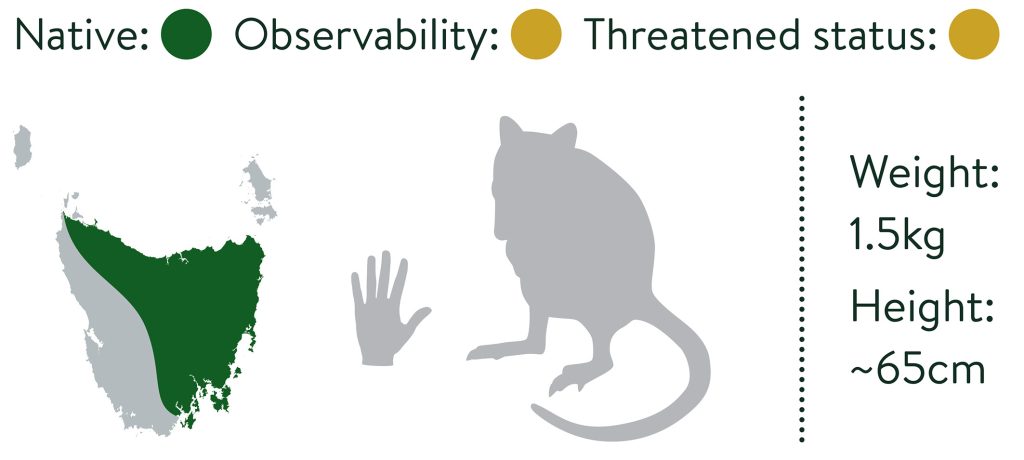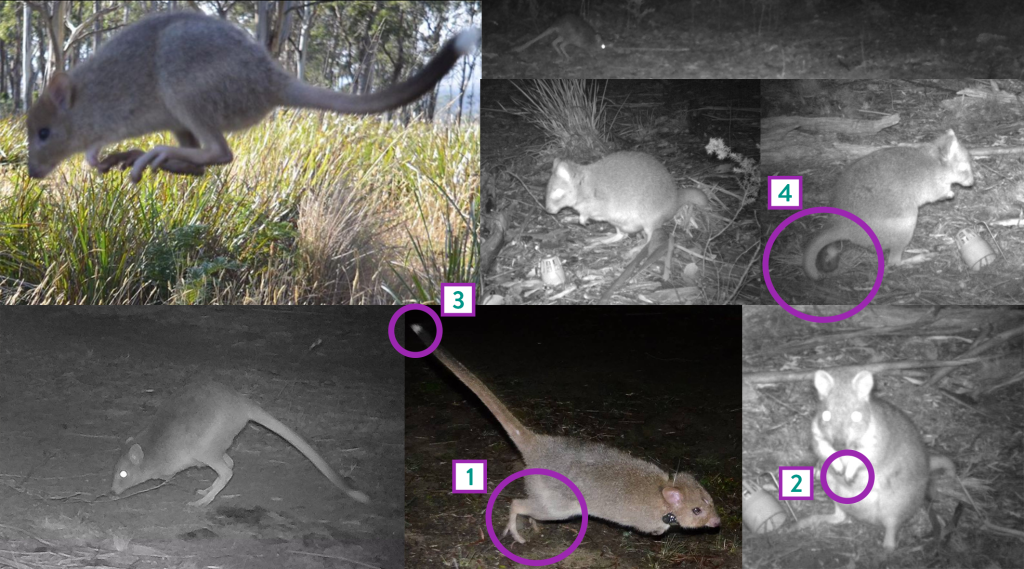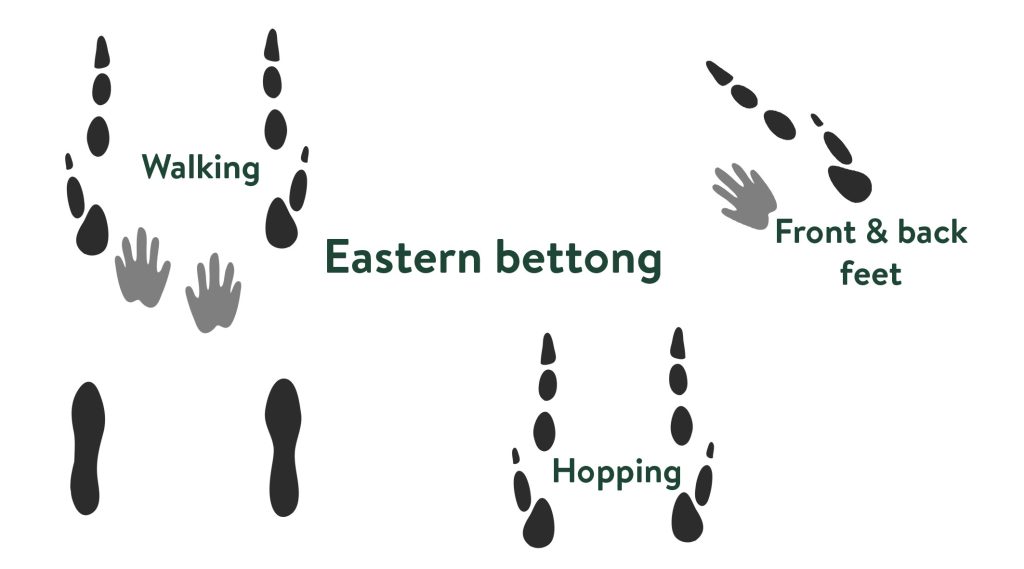Potoroidae | Bettongia gaimardi
Eastern bettongs are quintessential ‘ecosystem engineers’, playing an important role in shaping their environment. The mainland subspecies of the eastern bettong sadly went extinct in the 1920s, but a few Tasmanian individuals have since been reintroduced to a Canberran sanctuary.

Lifestyle
As bettongs forage for food, they dig up large amounts of soil, which helps to improve soil condition, promote seedling growth, and maintain fungal communities. In fact, their activity has even been shown to have the potential to slow down bushfires! A study in the Midlands region of Tasmania found that male bettongs have larger home ranges (87-149ha) than females (58-95ha) and these consisted of about 80% woodland habitat. They really are woodland specialists. Bettongs have long prehensile tails that they use to carry bundles of grass from which they build nests to sleep in during the day. Each bettong may have multiple nests to use as a safe haven should it need to escape a predator. Young bettongs can be born at any time of the year, leave their mothers after about six months, and typically live for three to five years.

Key identifying features
Small body size, sometimes referred to as a rat kangaroo. Coat is pale grey with a white underbelly. Long hindlegs and feet for its size (1) but very short forelimbs (t-rex arms, 2). Tail is the same length as the body, often with a bushy end and white tip (3). Tail is prehensile and used to carry bunches of nesting material (grasses, 4). Small round ears and short muzzle (‘snub nose’). Fast and agile.
Similar species
Tasmanian pademelon – rounder body; darker coloured coat; shorter tail with no white tip; less defined hind legs; longer muzzle.
Long-nosed potoroo – Much shorter body that is less lanky; usually bounds on four feet rather than two; tail is sparsely furred but may also have a white tip; nose is longer and more tapering.
Habitats
Eastern bettongs can be found in a variety of habitats including dry grassy woodlands, forests, heathlands, and agricultural areas. They are more common in areas with regenerating eucalypt stems and on infertile soils.
Diet
Fungi, especially native truffles that grow underground on the roots of trees and shrubs are a primary food source for eastern bettongs. They also eat some fruits, seeds, and invertebrates.
Threats
Eastern bettongs are threatened by habitat clearing, predation by cats, road collisions, and drought.

